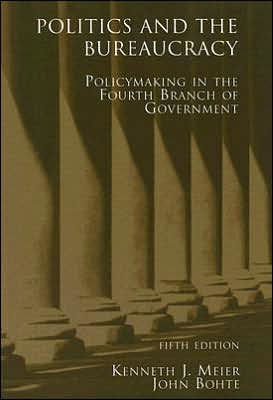5
1
9780495007470


Politics and the Bureaucracy / Edition 5 available in Paperback

Politics and the Bureaucracy / Edition 5
- ISBN-10:
- 0495007471
- ISBN-13:
- 9780495007470
- Pub. Date:
- 02/28/2006
- Publisher:
- Cengage Learning
- ISBN-10:
- 0495007471
- ISBN-13:
- 9780495007470
- Pub. Date:
- 02/28/2006
- Publisher:
- Cengage Learning

Politics and the Bureaucracy / Edition 5
$199.95
$199.95
This item is available online through Marketplace sellers.
$55.37
This item is available online through Marketplace sellers.
199.95
Out Of Stock

Product Details
| ISBN-13: | 9780495007470 |
|---|---|
| Publisher: | Cengage Learning |
| Publication date: | 02/28/2006 |
| Edition description: | REV |
| Pages: | 312 |
| Product dimensions: | 6.30(w) x 9.10(h) x 0.70(d) |
About the Author
From the B&N Reads Blog

